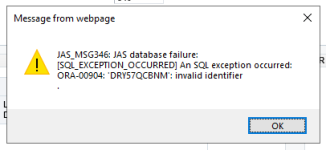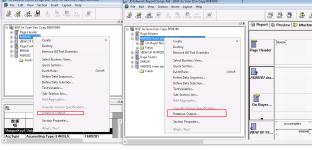Jeff George
Well Known Member
I'm working on a modification update that requires adding an additional field to the form header. I've already added the new data item to the table, business view, etc. However, when I try to test the application on local Web, I get the following error message when trying to save the data:

DRY57QCBNM is the SQL name of the field I added to the table. I thought that this meant that the application couldn't see the new field in the table, but our managed services CNC people said that adding a new field to a table shouldn't be an issue. Did I mess a step that I have to execute before this table change will work?

DRY57QCBNM is the SQL name of the field I added to the table. I thought that this meant that the application couldn't see the new field in the table, but our managed services CNC people said that adding a new field to a table shouldn't be an issue. Did I mess a step that I have to execute before this table change will work?



